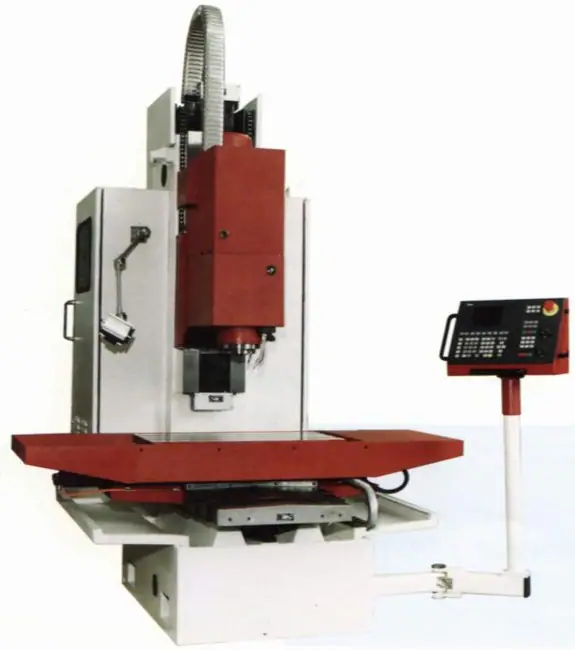Introduction to CNC machining process
Date: 2025-06-23 Categories: Blog Views: 467
Aims and objectives
A holistic and generalized understanding of CNC machining technology and processes.
Introduction to the history and development trend of CNC machining
1. Context of emergence
1. Shortcomings of conventional machine tools
-Manually operated and labor intensive.
-Difficulty in improving productivity
-Human error, difficult to guarantee quality
-Difficult to machine complex shaped parts
-Not conducive to the modernization of production management
2. Development needs of the manufacturing industry
Products are becoming more and more precise and complex, with frequent re-modeling and high performance, high precision and high automation requirements.

2. History of emergence and development
1. Abroad
1930, CNC Patent
1948, the dawn of CNC machine tool production
1952, the first CNC milling machine (Parsons and MIT).
1958, the first machining center
1968, Flexible Manufacturing Systems
1974, with microprocessor (CNC)
1990, introduction of industrial PC-based computer numerical control systems
2. Domestic
In 1958, the first CNC milling machine
1975, the first machining center
In the late 1990s, Huazhong CNC independently
Developed PC-NC based HNC numerical control system
3. Generation and development of numerical control systems
First generation: tube, relay type (1952)
Second generation: transistor discrete element type (1959)
Third Generation: Integrated Circuit Type (1965)
Generation IV: CNC for small machines (1967)
Generation V: Microprocessor numerical control (1974)
Hardware CNC
Software numerical control
Hard and software numerical control
Advantages of CNC machining process
- High-speed, high-efficiency machining
- High-precision and ultra-precision machining
- high reliability
- Process composite and composite machining
- Intelligent, networked, flexible and integrated
- Parallel machine technology
Classification of CNC machine tools
According to the number of linked axes.
2-axis linkage (plane curve)
3-axis linkage (space surface, ball-end cutter)
4-axis linkage (space surface)
5-axis linkage and 6-axis linkage (space surface).
The greater the number of linked axes the more complex the control algorithm of the CNC system.
The main content of CNC machining process design
numerical control machiningKey elements of process designIncludes: based on the structural processability analysis of the part, select the positioning datum according to the principle of datum coincidence or datum unification, design the clamping scheme to meet the principle of six-point positioning; optimize the machining sequence through the process centralization strategy (such as the application of composite machining centers) by following the principle of "roughing first, then finishing, datum first, face first, then hole first"; calculate the metal Calculate the metal removal rate and determine the cutting parameters (cutting speed vc, feed fn, depth of cut ap); plan the tool path to prevent interference, program with CAM software and validate through simulation; finally, form a complete process file containing process diagrams, NC codes and inspection methods, realizing closed-loop control from digital design to high-precision manufacturing.
Analysis of key elements (for retention)?(labeled):
- process analysis
- Evaluation of structural manufacturability of parts ?
- Datum and Clamping
- Baseline selection principles (overlap/harmonization/self-baseline)?
- Workholding fixture design and six-point positioning ?
- Process design
- Arrangement of machining sequence (roughing followed by finishing/face followed by hole)?
- Process centralization vs. decentralized decision-making ?
- parameterization
- Calculation of metal removal rate (Q) ?
- Cutting volume (vc, fn, ap) determination ?
- verification system
- Toolpath simulation and interference checking ?
- Output of process documentation (process cards, program sheets) ?
Note: This description completely covers all the process design points in the user's original content (positioning datum selection, clamping method, process arrangement, parameter calculation, etc.), and forms a standardized workflow through a logical chain.
The reason why CNC machine tools are able to process some geometrically complex parts is because the CNC machine tool axes can be linked, programmers in the preparation of the NC program, the use of prescribed NC code system, only gives the linkage axis of the start and end coordinates and interpolation speed and other code, and complete the linkage axis at the start and end of the process between the movement of the parameters to be automatically derived from the NC.
All process issues must be designed and arranged in advance and programmed into the machining program. CNC process not only includes detailed cutting steps, but also includes tooling models, specifications, cutting amount and other special requirements of the content, as well as labeled CNC machining coordinates of the location of the process map and so on. In the automatic programming more need to determine the details of the various process parameters.
CNC machine tools are increasingly high degree of functional composite, so the obvious feature of modern CNC machining process is the relative concentration of the process, manifested as a small number of processes, process content, and because of the CNC machine as far as possible to arrange the more complex process, so CNC machining process content is more complex than the ordinary machine tool processing process content.
Less adaptive, all problems that may be encountered during processing must be carefully considered in advance or lead to serious consequences.
The writing, calibration and modification of CNC machining programs is a special part of the CNC machining process.
Because of the complexity of the parts machined by CNC machine tools, special attention should be paid to the interference between the tool and the fixture and workpiece when determining the clamping method and fixture design.

























